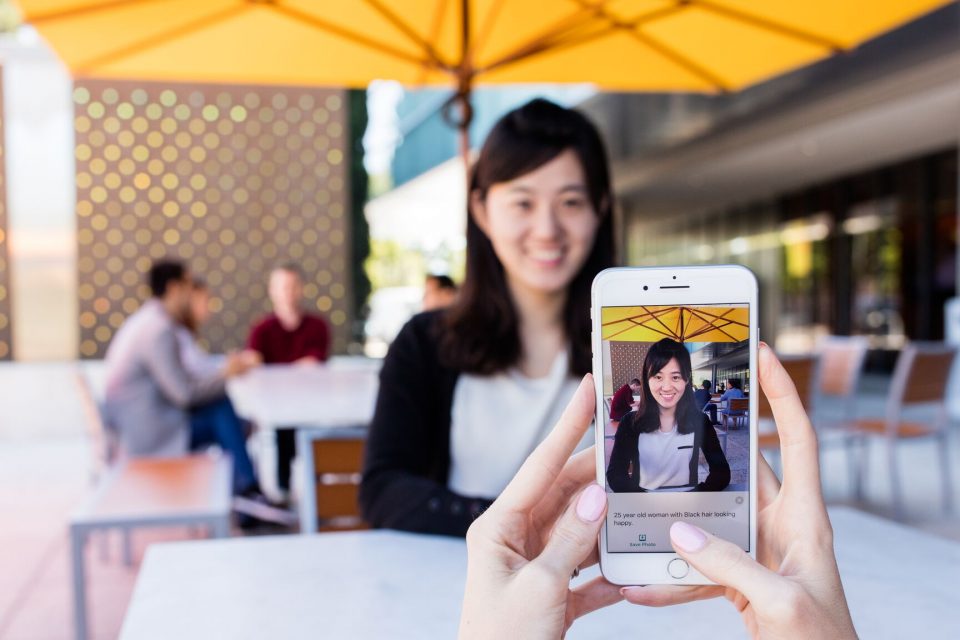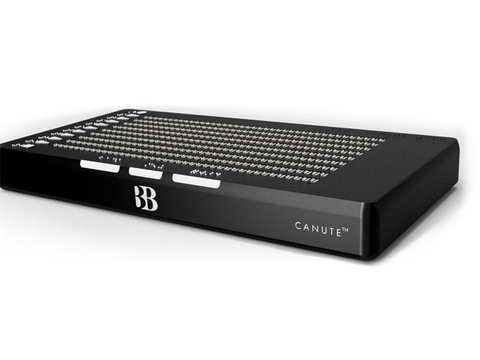Voice-Activated Assistive Devices: Supporting the Visually Impaired
A Guide to Life-Changing Assistive Modern Technology for the Blind and Aesthetically Damaged
The development of assistive technology has ushered in a transformative era for people that are blind or visually damaged, offering devices that enhance autonomy and improve day-to-day experiences. Developments such as wise navigation devices and AI-driven applications are redefining just how users communicate with their surroundings, while easily accessible analysis solutions and smart home modern technologies promise to more raise the quality of life.
Smart Navigation Devices
Smart navigating devices are transforming the way individuals that are aesthetically damaged or blind communicate with their setting. These sophisticated modern technologies, which incorporate general practitioners, audio comments, and haptic signals, supply users with essential details regarding their environments, improving their independence and movement.
One prominent instance is the usage of clever walking sticks equipped with sensing units that detect challenges and offer real-time comments via resonances or audio hints. These tools enable users to navigate complicated environments, such as active streets or crowded public areas, with increased confidence. Furthermore, wearable devices, such as wise glasses, are being created to help in identifying faces, reading text, and recognizing items, additionally augmenting the user's spatial understanding.
Additionally, clever navigation devices are significantly integrating artificial knowledge to assess data and adjust to customers' choices. This customized technique not only improves navigating efficiency however likewise fosters a feeling of empowerment amongst customers. As modern technology remains to breakthrough, the capacity for smart navigating tools to develop a much more easily accessible and inclusive globe for people who are blind or visually damaged remains appealing, ultimately improving their everyday experiences and interactions.
Cutting-edge Mobile Apps
Mobile applications are emerging as effective devices for helping people that are aesthetically impaired or blind, providing a series of functionalities that enhance daily living. These applications harness progressed technology to promote daily tasks, boost availability, and advertise self-reliance.
One classification of cutting-edge mobile apps concentrates on aesthetic acknowledgment. Applications like Be My Eyes link users with sighted volunteers by means of video clip calls, allowing real-time support for tasks such as reviewing labels or navigating unknown settings. Apps like Seeing AI utilize synthetic knowledge to define environments, checked out message, and identify items, providing users with critical details at their fingertips.
Another significant area is navigating and orientation. Applications such as Aira and Neighboring Traveler provide audio guidance, helping customers browse city rooms easily. They offer personalized assistance, permitting a more confident exploration of the setting.
In addition, wellness and health applications satisfy particular needs, such as medication monitoring and health and fitness monitoring. These applications aim to cultivate an all natural technique to wellness, guaranteeing that users can keep their health and wellness separately.
Wearable Assistive Gadgets
Wearable assistive devices represent a substantial innovation in innovation created to support people who are blind or visually damaged. These gadgets enhance flexibility and self-reliance by providing real-time responses about the surrounding setting. Among one of the most significant wearable innovations are clever glasses geared up with video cameras and sensing units, which can determine barriers and relay vital information via audio hints.

An additional ingenious choice includes wrist-worn tools that use ultrasonic waves to discover obstacles and give navigational help. These gadgets often feature adjustable settings, allowing individuals to tailor the signals to their certain needs.
The combination of expert system in wearable assistive innovation is additionally notable, as it continually boosts the accuracy and responsiveness of these tools. In general, wearable assistive tools are transforming the lives of the visually impaired and blind, cultivating higher freedom and enhancing lifestyle through cutting-edge options.
Accessible Reading Solutions
Easily accessible analysis services play a critical function in enabling individuals that are blind or aesthetically impaired to involve with text across numerous layouts. These services incorporate an array of devices and technologies made to improve analysis experiences, from traditional print materials to digital material.
One noticeable solution is Optical Character Recognition (OPTICAL CHARACTER RECOGNITION) innovation, which transforms published message into digital format, allowing individuals to pay attention to or review the web content utilizing display visitors. In addition, specialized e-readers outfitted with text-to-speech capacities use personalized reading experiences, enabling users to adjust font sizes and background colors for improved visibility.
Another efficient technique is braille screens, which offer tactile feedback by converting digital check this site out message right into braille. This permits people to check out touch, cultivating better self-reliance and access to literature. Additionally, mobile applications designed for reading checked records or publications can equip users with instant accessibility to a substantial collection of products.

Smart Home Technologies
Smart home technologies have revolutionized the way individuals who are visually damaged or blind connect with their living environments, boosting both freedom and safety and security. These cutting-edge remedies utilize automation and connection to develop an obtainable home customized to the demands of individuals.
Smart speakers and voice-activated assistants provide hands-free control over various tools, permitting customers to change lighting, security, and temperature level measures via basic voice commands. This performance minimizes dependence on sighted support and fosters a feeling of autonomy. Additionally, wise illumination systems can be customized to supply auditory feedback or responsive hints, making it possible for individuals to navigate their homes better.
Furthermore, security systems furnished with wise cams and sensors can send out real-time low bridge glasses signals to customers, enhancing personal security without demanding aesthetic confirmation. Automated door locks supply satisfaction, enabling customers to safeguard their homes easily.
Integrating clever home innovations not just boosts day-to-day living yet additionally motivates social interaction via attached devices - Wearable technology for low vision. With continuous developments in assistive technology, the future shows up appealing, as even more options will certainly arise to additional equip individuals who are blind or aesthetically damaged, making sure a more inclusive and independent lifestyle
Verdict
To conclude, the improvements in assistive innovation for the blind and aesthetically impaired stand for a substantial leap toward enhancing independence and top quality of life. Smart navigating tools, innovative mobile applications, wearable devices, accessible analysis options, and wise home technologies jointly cultivate an inclusive environment. This assimilation of modern technology not only improves flexibility and day-to-day living however also encourages individuals to engage totally with their surroundings, promoting better autonomy and engagement in culture.
Developments such as clever navigating devices and AI-driven applications are redefining just how individuals interact with their environments, while available analysis options and smart home modern technologies promise to more raise the quality of life. As innovation continues to development, the potential for wise navigation tools to develop a much more accessible and inclusive globe for individuals that are visually damaged or blind remains appealing, inevitably you could look here reshaping their everyday experiences and communications.
Wearable assistive devices stand for a substantial development in modern technology designed to sustain people who are blind or visually damaged. Among the most remarkable wearable technologies are wise glasses outfitted with sensing units and electronic cameras, which can identify challenges and relay crucial info with sound cues.
Smart navigation tools, ingenious mobile applications, wearable tools, accessible reading services, and wise home modern technologies jointly foster an inclusive atmosphere.